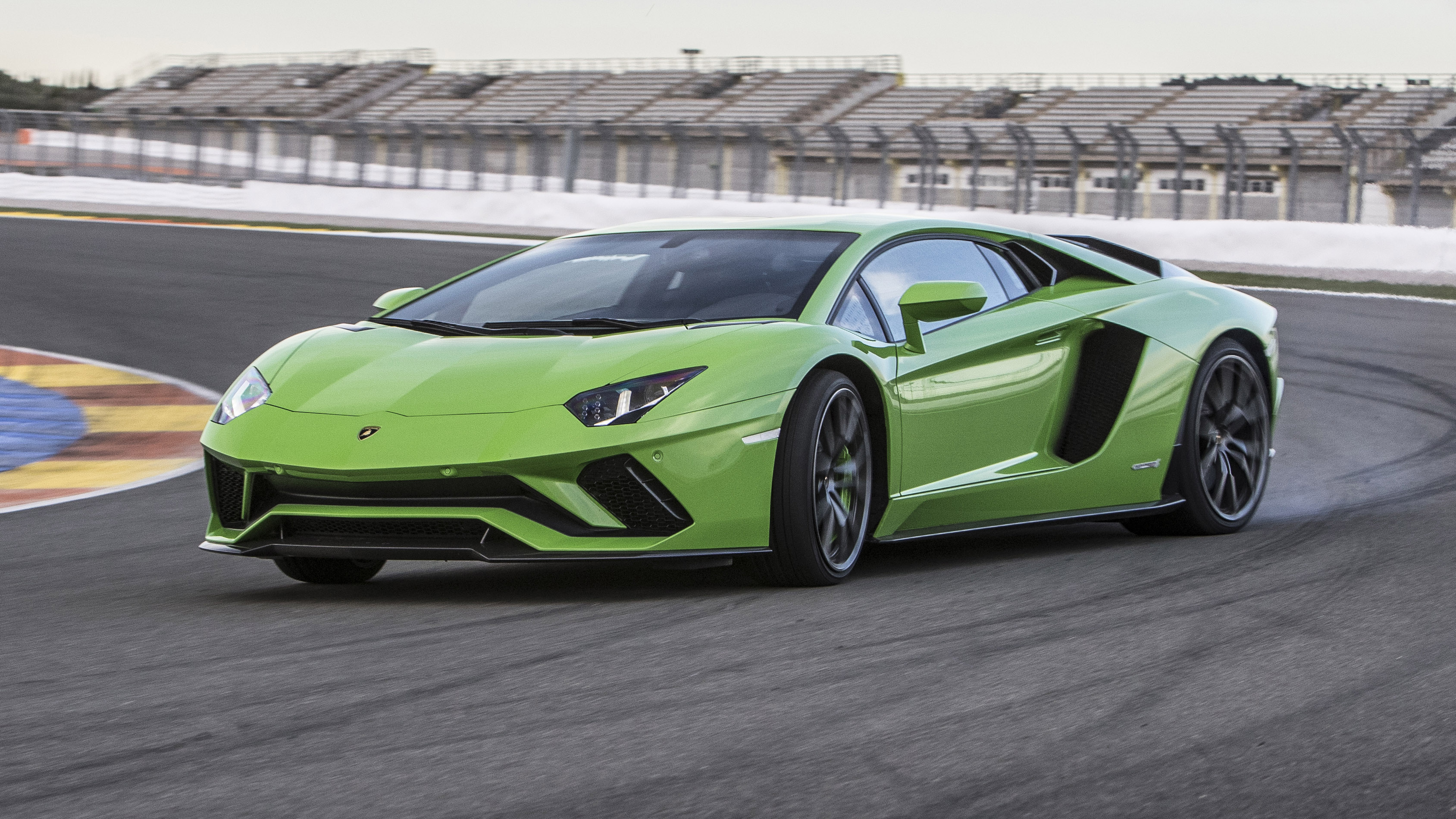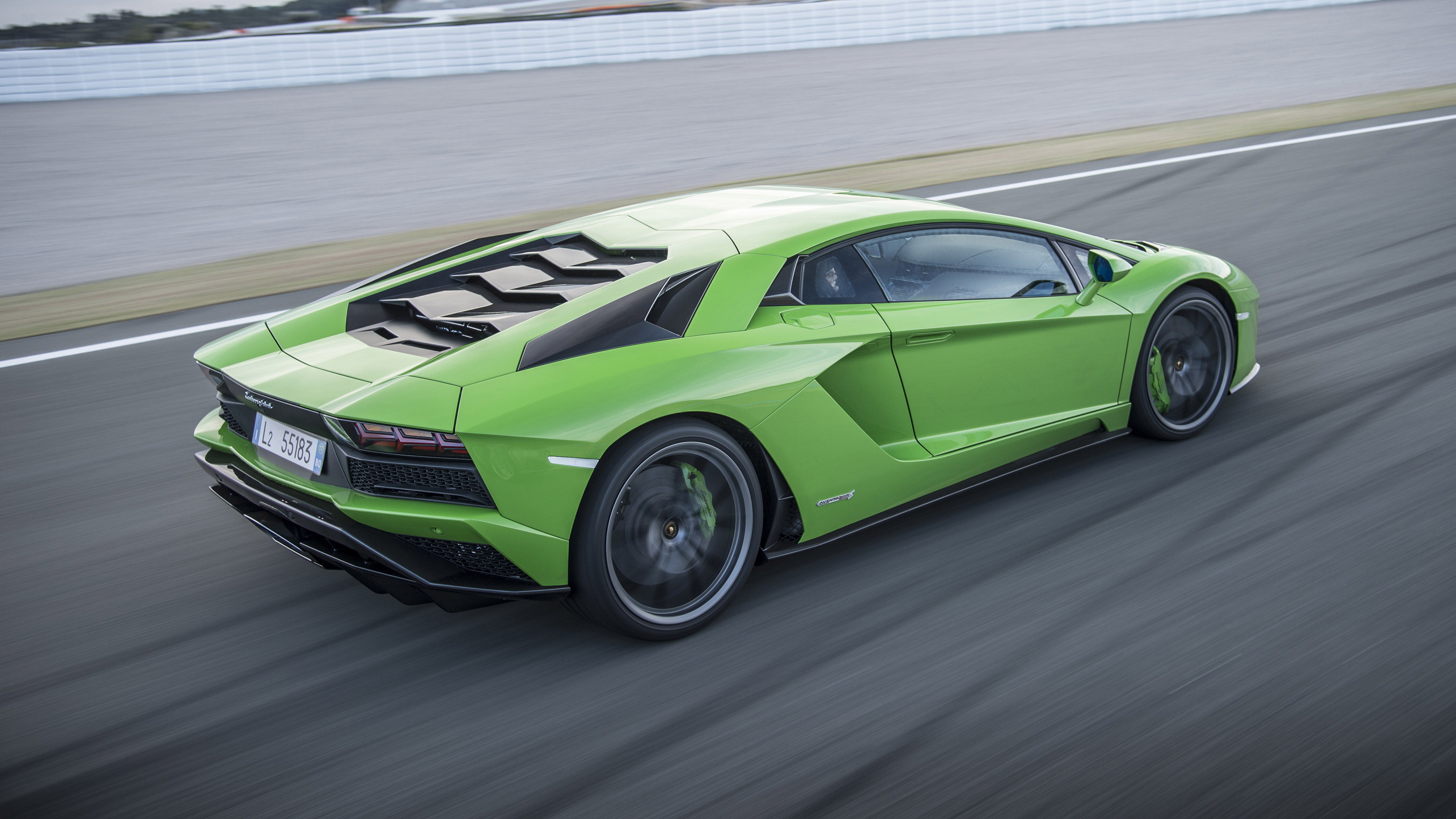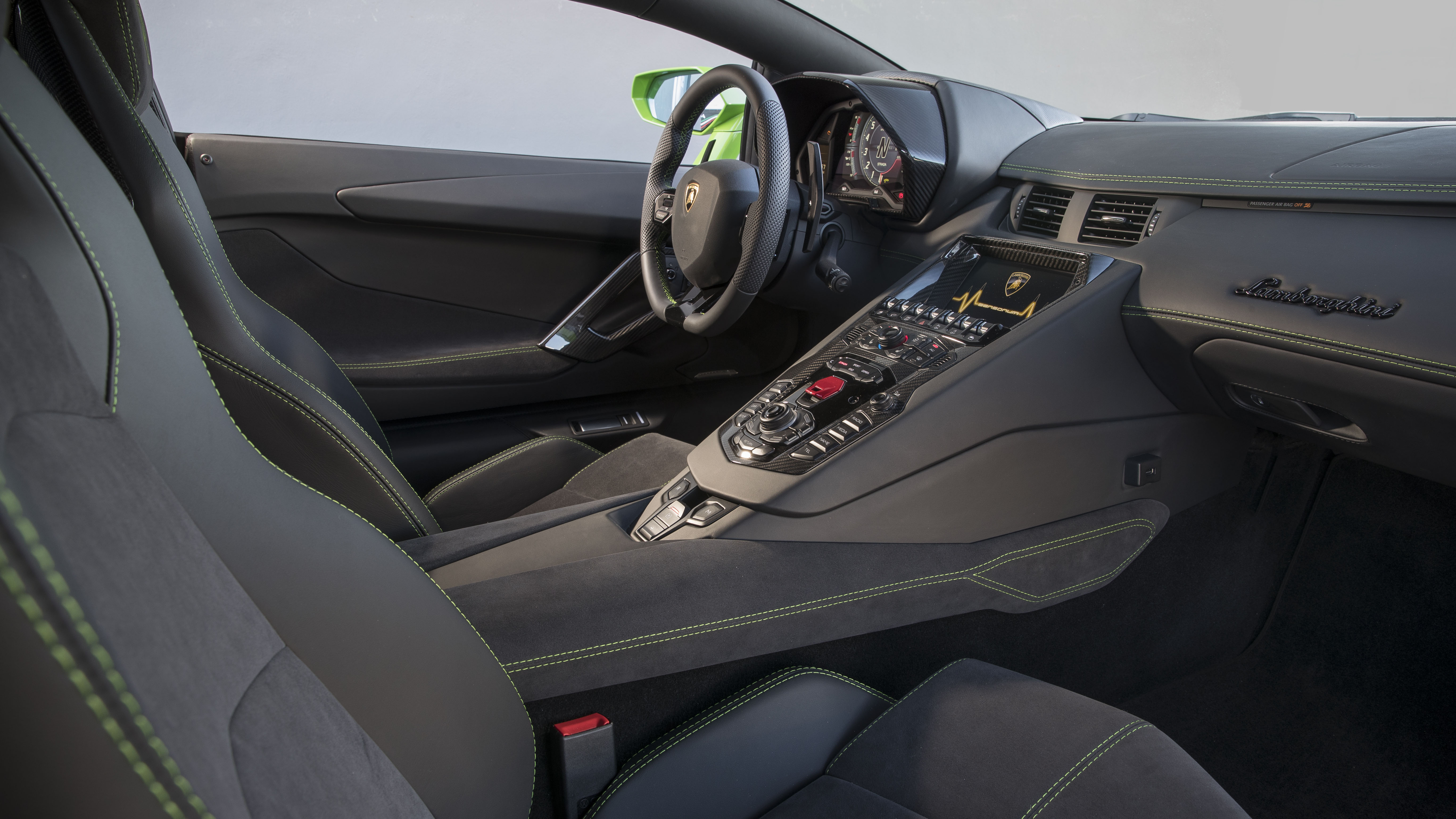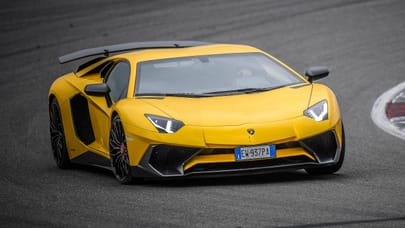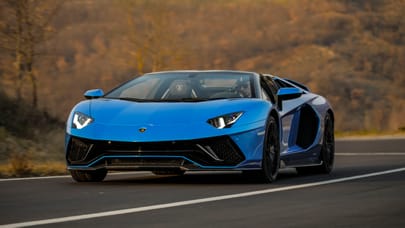
Driving
What is it like to drive?
This is not the Aventador we know and – mostly – love. The outgoing car was a mighty thing, but it didn’t have the liveliest chassis. You were aware it was a heavy car, dominated by its engine, not something that wanted to dance to your tune. The S is a car transformed. I’d stop short of saying it’s outright playful, but the agility, the steering, the weight management, the integration of all the systems… it’s a big, big step forward.
Central to this is the new 4WS system. Everyone is fitting these now, but Lamborghini does seem to have pushed the system further than most. The rear wheel can turn up to three degrees at low speed, giving the sense that the Aventador has a 500mm shorter wheelbase. Rarely do car firms line up old against new on a launch, but they did here, and through a slalom the difference was amazing – the S was far more agile, you could feel both ends helping out, where the old car seemed to be dragging an anchor behind it. At higher speeds the rears turn the same way as the fronts, making the wheelbase seem 700mm longer. Up goes stability and up goes confidence.
On circuit it feels much more alert, too. Now, while the pictures you’re looking at show a lovely dry track, the reality was pouring rain and flooded corners. No matter which way you cut it, or how many wheels you divvy it up between, 730bhp is a lot to cope with in these conditions. Especially when it’s spat at the tarmac through 255/30 ZR20 front tyres and colossal 355/25 ZR21 rears. Due to the rear steering Lambo teamed up with Pirelli to develop a brand new P Zero compound for the car.
Now because it was wet, all the Aventador S did when you turned in, was understeer. You’d hear the tyres grumble and push wide, but although this wasn’t ideal, the important thing was that you could feel what the car was up to and do something about it. The S has a variable steering rack. Normally I hate these, but this set-up didn’t offend me. It’s very direct off-centre, but without feeling nervous because it’s balanced and assisted by the rear steering.
So when the front end slid, I could back off the throttle and the car would tighten its line. It’s surprisingly adjustable and wears its weight lightly (1,575kg is a dry weight – actual kerbweight is probably around the 1,700kg mark).
This behaviour changes depending on driving mode. On track you can ignore Strada (street) because the gearshifts are too slow and the engine not quite alert enough. Sport is spot on for wet circuit driving, sending up to 90 per cent of torque rearwards, while Corsa, which is focused on fast laps, can only direct 80 per cent aft. In Corsa you also have to put up with a fairly savage ride and a completely savage gearchange. New is Ego, which allows you to select your own settings for the steering, suspension and drivetrain. About time too.
The Aventador S retains the sequential manual ISR seven-speed gearbox. Lamborghini claims to have sharpened it up and improved it, but compared to the latest twin clutchers, it’s a dinosaur. It may be lighter and easier to package, but the shifts are either noticeably slow or head-bangingly savage. Of course you can lift-off to smooth them out, and you could argue that this is good character-building stuff. But compare it to an Audi R8 or Ferrari 488 and it feels 20 years old.
The gearchanges punctuate the wild excesses of the engine, spoil its flow. This V12… oh my god. The old adage of buying the engine and getting the rest for free? That’ll do. It’s mesmeric, howling and punching forward, making the car feel like an unstoppable force. You’re not going to notice the extra 40bhp. Lamborghini still claims the same 2.9sec sprint to 62mph, and although it’ll hit 124mph in 8.8secs and 186mph in 24.2secs, in reality that’s no faster than a Ferrari 488 GTB or McLaren 570S (we figured the 488 at 8.5secs to 124mph, the 570S at 8.6secs). But that’s not the point. This V12 doesn’t just generate noise or vibration or acceleration, it has its own life force. The same can be said for Ferrari V12s, too, so the Lambo’s not unique, but god bless them for sticking with it. This is transcendental. The top end as the needles whips up past 6,000rpm and you know there’s still 2,500rpm to enjoy… oh my.
Out on the road, well, it copes. There’s a lot of road noise, the tyres can get distracted by cambers and the like, and on light openings the throttle is snappy, but it manages and the steering doesn’t lose its way. But every Aventador you see trundling around town is missing out. It needs space to perform, and when given it and taking everything together, the Aventador S is a car you now really have fun with – and not just for the way it accelerates.
I’d love to have driven it in the dry. I reckon it would have contained the understeer much better (although the difference in tyre widths, 255 vs 355, is abnormally large) and allowed the engine to really lean on the chassis and show both off to full effect.
Variants We Have Tested
Trending this week
- Car Review
BMW iX3




